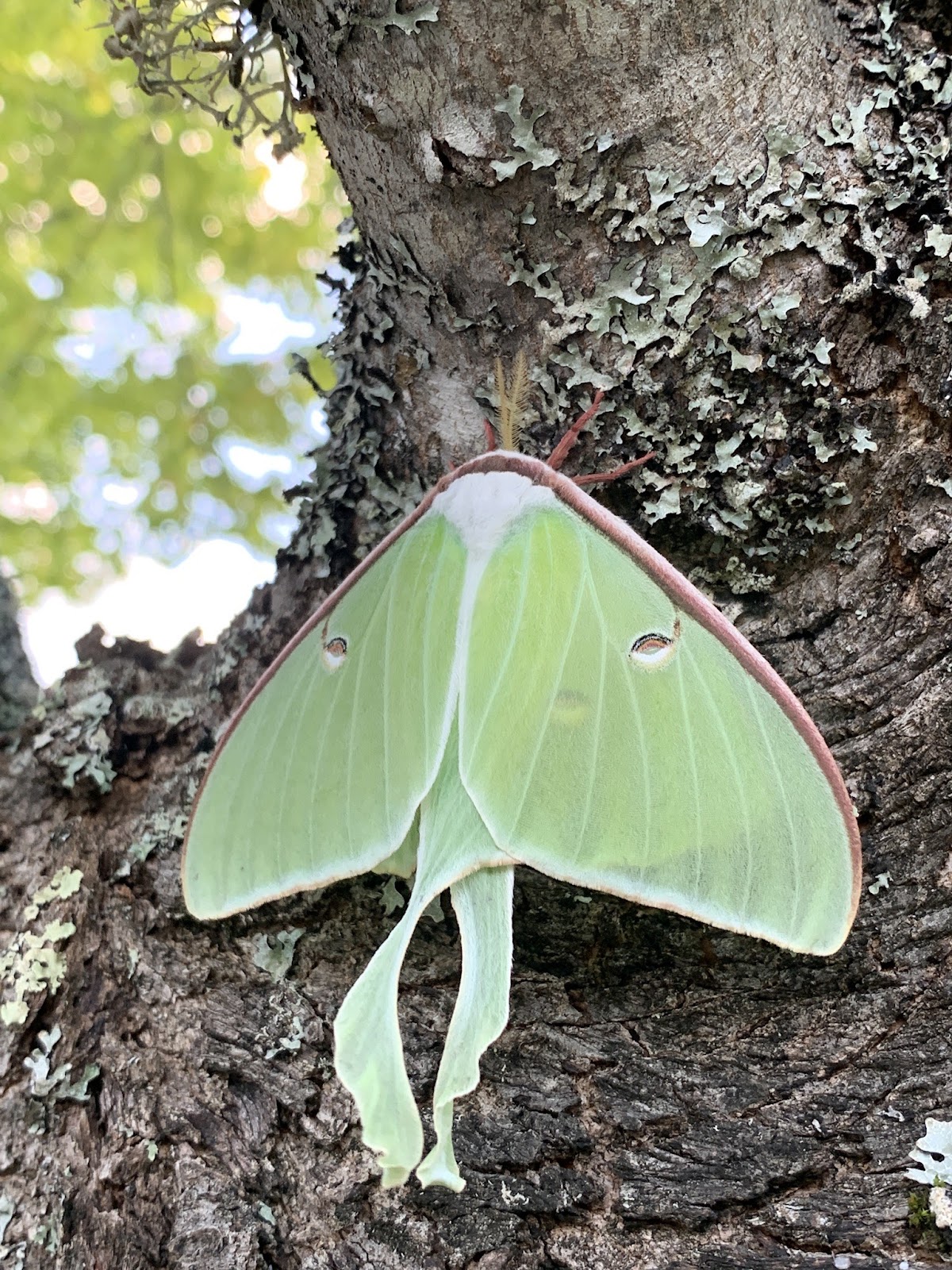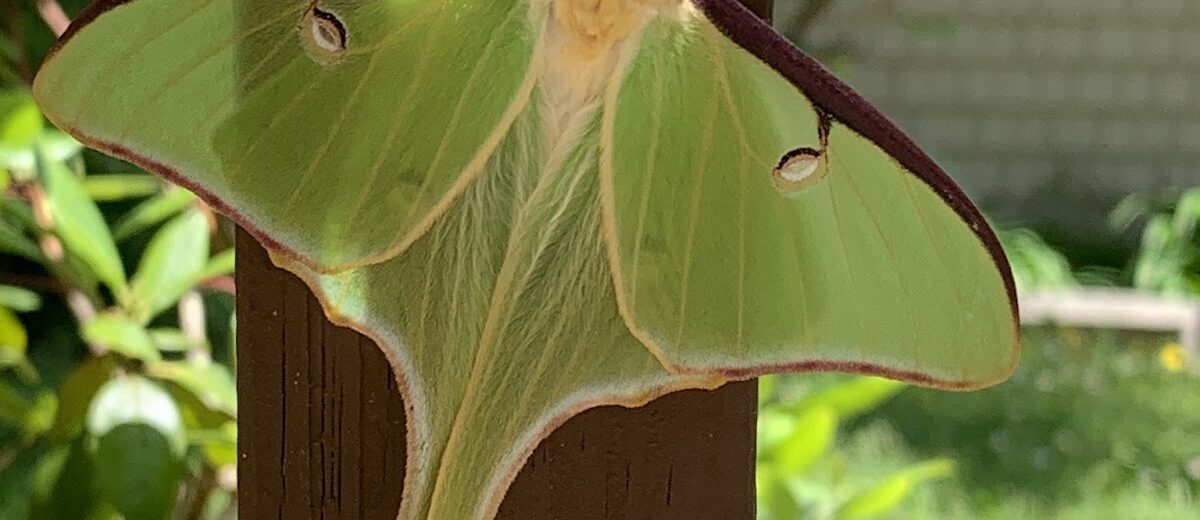by Jess Moskowitz | photos by Elizabeth Halasz
The luna moth (Actias luna) is a moth you don’t easily forget meeting. With foam green wings spanning up to five inches, luna moths are one of the night’s most striking flyers. While not the largest moth in North America (that distinction is held by the cecropia moth) they still manage to dwarf most of their fellow Acadian moths.
Not simply majestic for majesty’s sake, the luna moth’s many stunning physical characteristics are believed to be adaptations against predation. The dark spots on the wings, for example, are made up of teeny-tiny pigmented scales that mimic eyes, helping to discourage sneak attacks from predators. Additionally, researchers have found that the long tails of the luna moth’s hindwings help protect against bat attacks. When in flight, these long wing tails whirl behind them creating an acoustic diversion that confuses echolocating bats on the hunt. These adaptations help protect the moths during their brief adult life stage – typically one week.
While many moths pollinate both night and day blooms, luna moths are not known to be pollinators. In fact, adult luna moths lack a mouth, meaning they must consume all the nutrients for their lifetime while they are caterpillars, feeding on alder, beech, birch, red maple, and sumac leaves. As adults, they are not tempted by tasty leaves and flowers but are singularly focused on finding a mate. Despite their lack of pollination services, luna moths have captured the hearts of many simply with their distinct and stunning looks.

Luna moths are celebrated in art, poetry, and the stories moth-lovers share of their sightings. Luna moths act as charismatic ambassadors for North America’s moths; in 1987 the U.S. Postal Service featured luna moths on a US postage stamp, becoming the first, and so far only, moth on which this honor has been bestowed. As 2022 National Moth Week draws to a close with the end of July, there is no better time to get to know the luna moth and the hundreds of other fascinating moth species that may be fluttering through your neighborhood.
Here on the Schoodic Peninsula each summer brings just a handful of luna moths along with the hundreds of moths we look forward to seeing. So far the Schoodic Signals project on iNaturalist has 29 observations of Luna moths, the first occurring in 2015, and a whopping 11 of which have been observed just this summer. These observations can help provide insights into the population dynamics of this glorious moth. Insects are in global decline due to pollution, pathogens, pesticides, use and other stressors caused by climate change. In some areas of the world researchers have observed declines of up to 75% of flying insect biomass over the past 27 years, other researchers have conducted modeling that predicts 40% of insect species could go extinct in the next thirty years. As night flyers, luna moths are especially threatened by light pollution that disrupts their mating and navigation. The dark skies of Acadia National Park and much of the Schoodic Peninsula help explain their presence here. Paying attention to the luna moth, along with other moth populations, in your area can help pair regional population data with environmental factors. If you happen across a luna caterpillar or adult moth, you can help us track the population by sharing your observation to iNaturalist.
